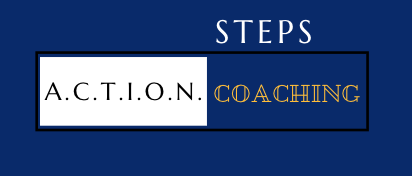
9 Practical Tips: From Tactical Fixes to Strategic Vision
written by Dr. Melinda Zay MCC

In today’s dynamic leadership landscape, mastering challenges demands a nuanced blend of tactical acumen and strategic vision. Acknowledging the essential interplay between the immediate and the future, leaders must synthesize the insights from tactical problem-solving with the foresight of strategic decision-making.
Tactical Leadership: Addressing the Now with Pragmatic Solutions
Tactical leadership, akin to firefighting, involves swiftly resolving pressing issues. While indispensable for day-to-day operations, over-reliance on tactical fixes may stifle growth and innovation, necessitating a holistic approach.
Strategic Leadership: Nurturing Proactive Environments for Future Triumphs
Strategic leaders cast their gaze beyond the present, setting long-term goals and aligning decisions with a visionary outlook. Anticipating challenges and fostering a proactive team environment are keystones for sustainable success.
Shifting Perspectives: Crafting Mental Space for Strategic Thinking
- Set Clear Goals: Defining comprehensive, future-oriented objectives guides leaders in prioritizing efforts and decisions, ensuring alignment with the overarching vision.
- Reflective Introspection: Regular introspection sessions are invaluable. Leaders must assess their styles, team dynamics, and organizational goals, fostering self-awareness and enabling course adjustments.
- Empower Through Delegation: Efficient delegation empowers teams to handle daily tasks, granting leaders time for strategic contemplation and forward-thinking planning.
- Continuous Learning and Networking: Staying abreast of industry trends and best practices through continuous learning and networking enhances knowledge, enabling leaders to make well-informed strategic choices.
- Inspire Innovation: Cultivating a culture of creativity through brainstorming and openness to new ideas fuels innovation, leading to breakthroughs aligned with long-term aspirations.
- Enhance Communication: Transparent communication of vision and goals fosters trust and unity. Regular reviews of communication channels ensure alignment, essential for a cohesive team working towards shared objectives.
- Embrace Adaptability: Strategic leaders balance steadfast commitment to long-term goals with adaptability. The ability to pivot strategies in response to evolving business landscapes is a hallmark of effective leadership.
- Strategic Prioritization: Assertiveness in focusing efforts on tasks aligning with long-term goals is pivotal. Leaders must confidently say ‘No’ to endeavors incongruent with the strategic vision, allowing teams to concentrate on impactful projects.
- Holistic Alignment: Understanding individual values and team dynamics is fundamental. Establishing clear roles, aligning team goals with organizational objectives, and fostering cohesion create a synergistic environment.
Navigating Leadership Terrain with Wisdom and Vision
Achieving mastery in leadership necessitates blending tactical efficiency with strategic foresight. By synthesizing the insights from tactical approaches and fostering an environment conducive to strategic thinking, leaders empower themselves to guide their teams toward a future illuminated by success and sustained growth. This holistic approach not only benefits the organization in the long run but also empowers leaders to steer with confidence and purpose, elevating the entire team on a journey filled with triumphs and accomplishments.
| Tactical Traits | Strategic Traits |
|---|---|
| Immediate problem-solving | Long-term goal setting |
| Quick fixes | Proactive decision-making |
| Day-to-day operations focus | Future-oriented vision |
| Reactive solutions | Anticipating challenges and risks |
| Focus on short-term results | Alignment with long-term objectives |
| Task-oriented | Big-picture thinking |
| Problem-centric | Opportunity-centric |
| Micro-management | Empowering teams, effective delegation |
| Limited innovation scope | Cultivating creativity |
| Adapting to current needs | Adapting to future trends |
| Narrow scope | Broad perspective |
| Firefighting and troubleshooting mentality | Creating mental space for reflection |
| Fixing the present | Planning for the future |
| Immediate decision-making | Strategic and thoughtful decisions |
| Reactivity | Proactivity |
| Short-term orientation | Long-term vision |
| Limited adaptability | Embracing adaptability |
| Status quo preservation | Encouraging innovation |
| What else would you add to the list? |
About the author:
In Dr. Melinda Zay’s vast experience as a leadership development coach spanning over 15 years, a profound understanding of the intricacies of leadership has been cultivated. Through interactions with leaders from diverse industries and countries, the author has identified nine pivotal aspects of strategic leadership crucial for achieving unparalleled success.
Self-coaching option:
If you prefer the self-coaching path, these insights serve as your compass. Navigating leadership development with the reflective coaching questions provided below, you can dive deep, explore, and take intentional steps toward your goals.
Ready to Begin? Whether you choose the guided coaching route or the self-coaching path, your journey starts now. By making the commitment to yourself and your leadership potential, they embrace the opportunity for growth. Let this empowering voyage commence.
Self-Coaching Questions to Reflect, Plan and Commit

Self-Reflection:
- What aspects of your leadership style resonate more with tactical or strategic approaches?
- What percentage of your leadership approach is tactical, and what percentage is strategic?
- How do you currently create space for reflection in your busy schedule, and what insights have you gained from this practice?
Delegation and Empowerment:
- What tasks could you delegate to your team, allowing you to focus more on strategic thinking?
- How comfortable are you with empowering your team members to take ownership of their roles and tasks?
Continuous Learning:
- What steps can you take to stay updated with industry trends and best practices relevant to your field?
- How might networking with peers and industry experts enhance your knowledge and strategic decision-making abilities?
Innovation and Team Creativity:
- How open are you to new ideas and innovations within your team?
- What initiatives can you implement to encourage a culture of creativity and brainstorming sessions among your team members?
Effective Communication:
- Reflect on recent communication within your team. Is there room for improvement in clarity or transparency?
- Are there specific communication channels or methods you need to adjust to ensure everyone is aligned with your vision and goals?
Adaptability and Assertiveness:
- Think of a recent situation where you had to pivot your strategies. How did you handle it, and what did you learn from the experience?
- How comfortable are you with asserting your priorities and saying ‘No’ to tasks that don’t align with your long-term objectives?
Alignment and Team Cohesion:
- Reflect on your team’s dynamics. Are there any misalignments in roles or goals that you need to address?
- How well do you understand the individual values and aspirations of your team members? How can you leverage this understanding to enhance team cohesion?
Long-Term Vision:
- Describe your organization’s long-term goals. How do your current strategies align with these objectives?
- What steps can you take to ensure your team’s goals remain in harmony with the broader organizational vision?
Personal Growth and Development:
- In what areas do you feel you need personal growth to become a more effective strategic leader?
- What actions can you take to enhance your skills and knowledge, contributing to your ongoing development as a leader?
Remember, these questions are designed to encourage self-reflection and growth. Embracing continuous improvement and adapting your leadership style based on your insights can lead to significant positive changes within your team and organization.
